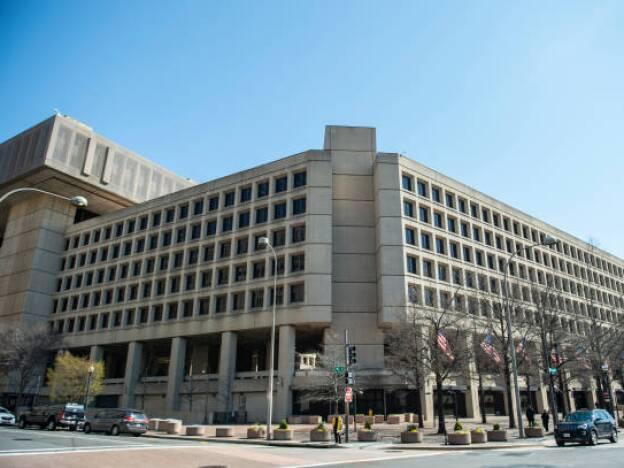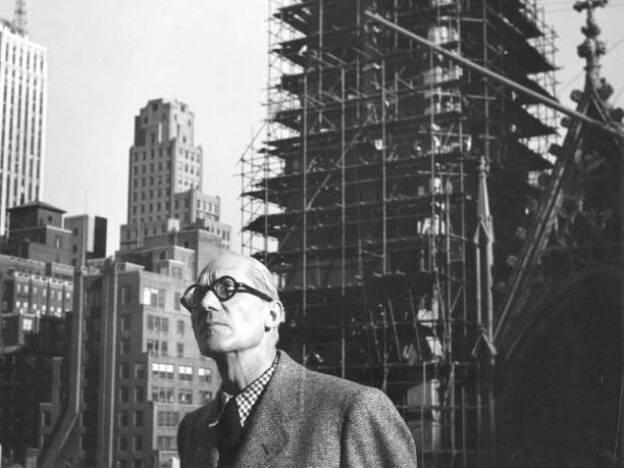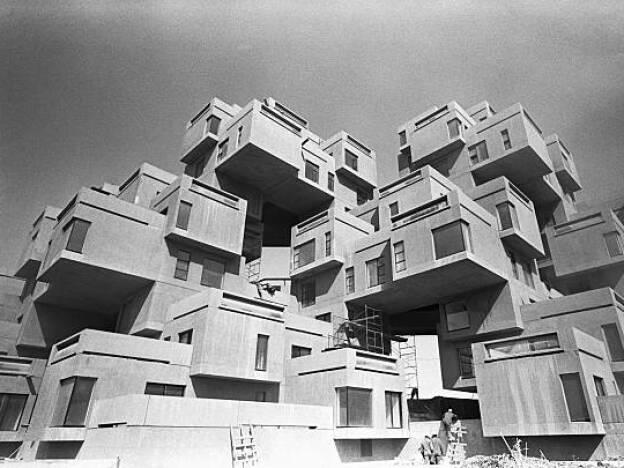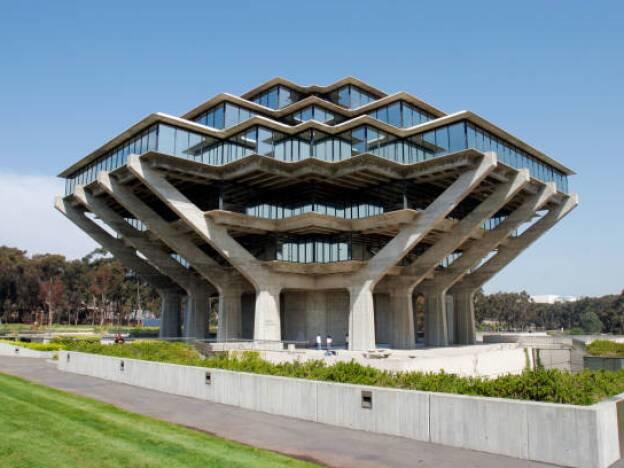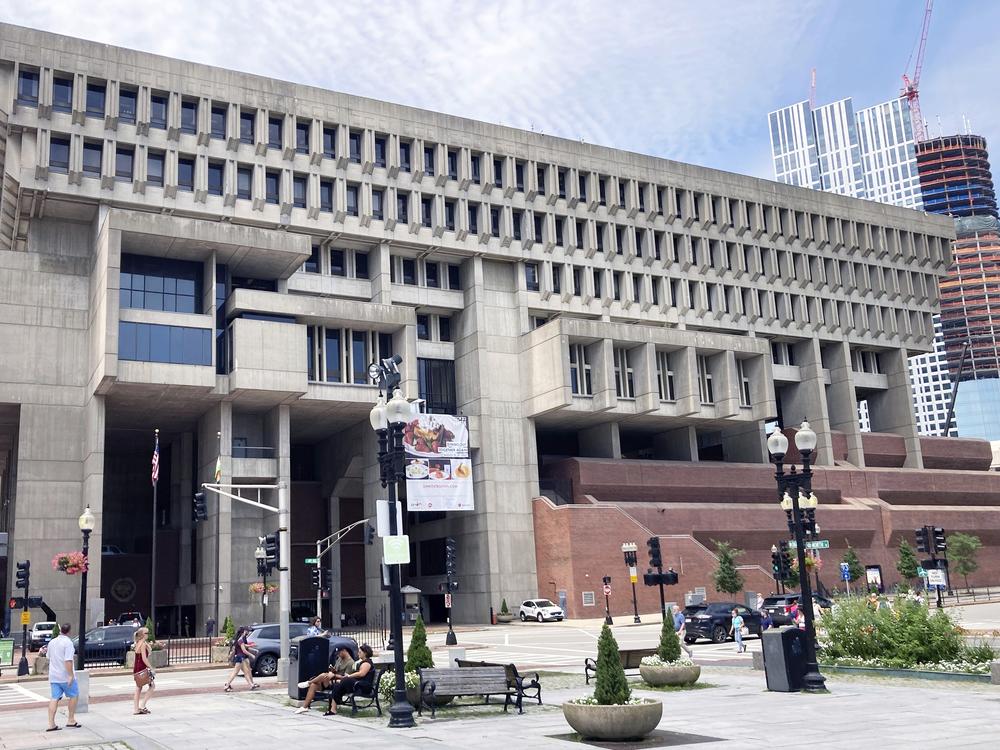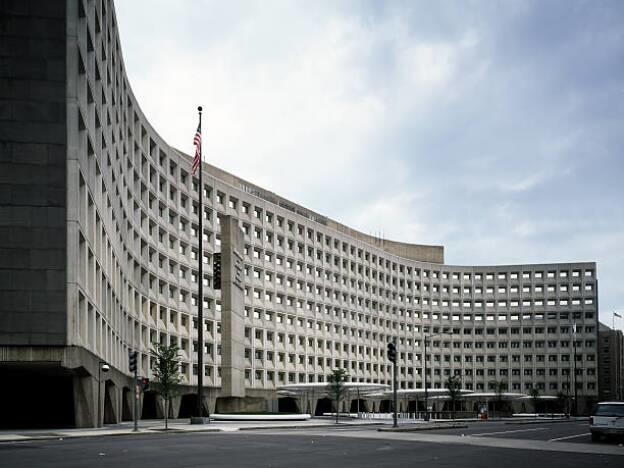Section Branding
Header Content
Why brutalist buildings should stay, even if people think they're ugly
Primary Content
If you’ve seen a large building made entirely out of concrete built sometime between the 1950s and 1970s, you’ve probably seen the style of architecture known as brutalism.
People have a lot of feelings about these buildings. NPR interviewed people on the street in front of FBI headquarters in Washington D.C. Built in 1975, it’s a well-known example of brutalism that takes up two city blocks — and that a lot of people dislike.
“I can’t stand it,” said Arielle Carani, a 24-year-old from Chicago. “I work right across the street from it, so I have to look at it every day that I’m in the office. And it’s just so ugly.”
Darren Williams, a 29-year-old from Michigan said, “It kinda looks like a prison with windows. Just a concrete slab stuck in the middle of a city.” And Devon Akmon, a 48-year-old from Ann Arbor Michigan said it looks like “a mass of stone and glass without much architectural detail.”
Nobody we interviewed in front of FBI Headquarters had positive things to say about the brutalist style of the building.
“I think that folks can feel like these buildings are out of scale, and they’re maybe not as beautiful as other types of federal architecture,” said Angela Person, co-curator of a brutalism exhibit at the National Building Museum in D.C. “They just don’t look the same as many other architectural styles that we’ve become accustomed to encountering.”
So what is brutalism and why do people dislike it?
Brutalism started in the 1950s in the U.K. One of its pioneers was Le Corbusier, a Swiss-French architect who did a lot of work in raw concrete after World War II, including housing, religious buildings, and government buildings. He called this style béton brut, meaning raw concrete.
“He was referring to the concrete material as being raw and not something you could totally control the precision of. And he just embraced that. He was such a leading figure that I think other people followed in his footsteps,” said Jeanne Gang, founder of Studio Gang, an architecture firm based in Chicago, New York, San Francisco and Paris.
Person says brutalism is a style of modernism, a movement that appealed to architects and designers because of its material honesty and lack of ornamentation. They felt they were creating beautiful, sculptural buildings that would stand the test of time
She says you can look at brutalist buildings and understand how they are laid out. The materials are presented how they are: There is no plastering, or unnecessary paint or finishes.
There was a building boom after World War II, and many places, such as the U.K. needed to completely rebuild. Person says brutalism became popular for a lot of large, institutional buildings — like big government buildings, campus buildings, and public housing. The brutalist style lent itself to rapid construction and was relatively affordable. Plus, concrete was and remains largely available around the world.
“It was the style of the moment in the postwar period. I think it was a popular style in that time because there was this need to really rapidly scale up the amount of office space for the federal government,” said Person.
Brutalism got a bad rep in the press and sometimes for political reasons too, said Gang. That's because these buildings often represented socially ambitious programs that then went into disfavor. Many brutalist buildings got torn down.
Person says she thinks some of these buildings are in disrepair because it’s been difficult to fund their upkeep and update them.
“If they’re not well-loved, it can be difficult to prioritize finding the funding and maintaining them,” said Person.
Why keeping them around is the green, sustainable move
These buildings were meant to stand the test of time, Person says. But they’re in need of significant investment if they are going to exist for another five decades.
Gang says there is an environmental incentive not to demolish brutalist buildings. The process of curing cement into concrete causes a lot of carbon emissions. Generally, people are now trying to use more environmentally friendly building materials.
But the brutalist buildings have already been built, and the carbon has already been released into the atmosphere.
“So preserving them would really be saving carbon…little nuggets of carbon that you would be saving and reusing,” said Gang. “It’s the most environmentally friendly thing you can do to reuse a building like that.”
Brutalist buildings, though, can be more difficult to maintain. Person says sometimes if the plumbing or electrical must be updated, workers have to run wires or piping outside the walls so they are visible.
Gang has renovated brutalist buildings and says there are a lot of challenges with their preservation. They need to be adapted to accessibility standards, they have outdated mechanical systems, and some building features may be difficult to repurpose.
“If you tear them down, it’s so wasteful that it’s really criminal in a way. It’s like, you could be building on these interesting buildings and make them work for today,” said Gang. “Most people would just say this is not a good building. Let’s tear it down. It’s my impression they would be lost to the wrecking ball if people don’t start to kind of wake up and see the qualities there.”
Obed Manuel and Suzanne Nuyen edited the digital version of the story.
